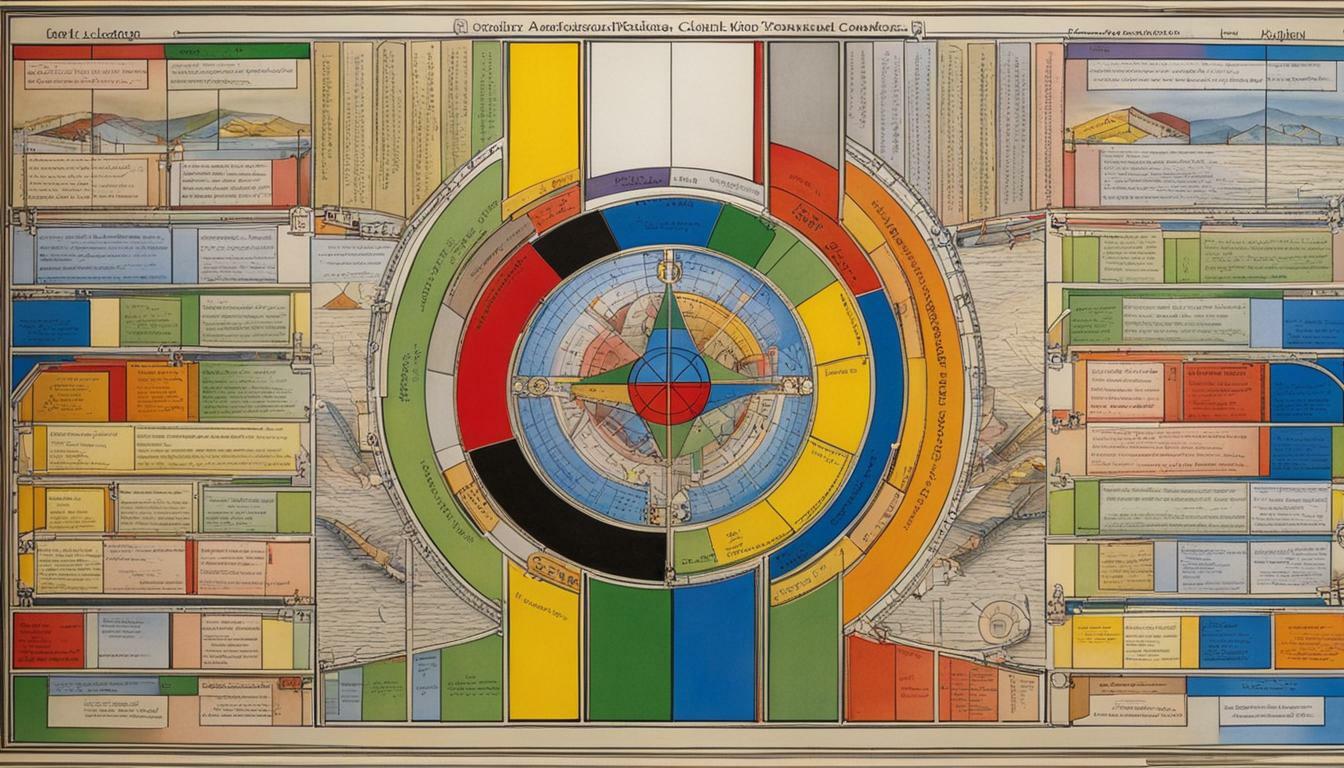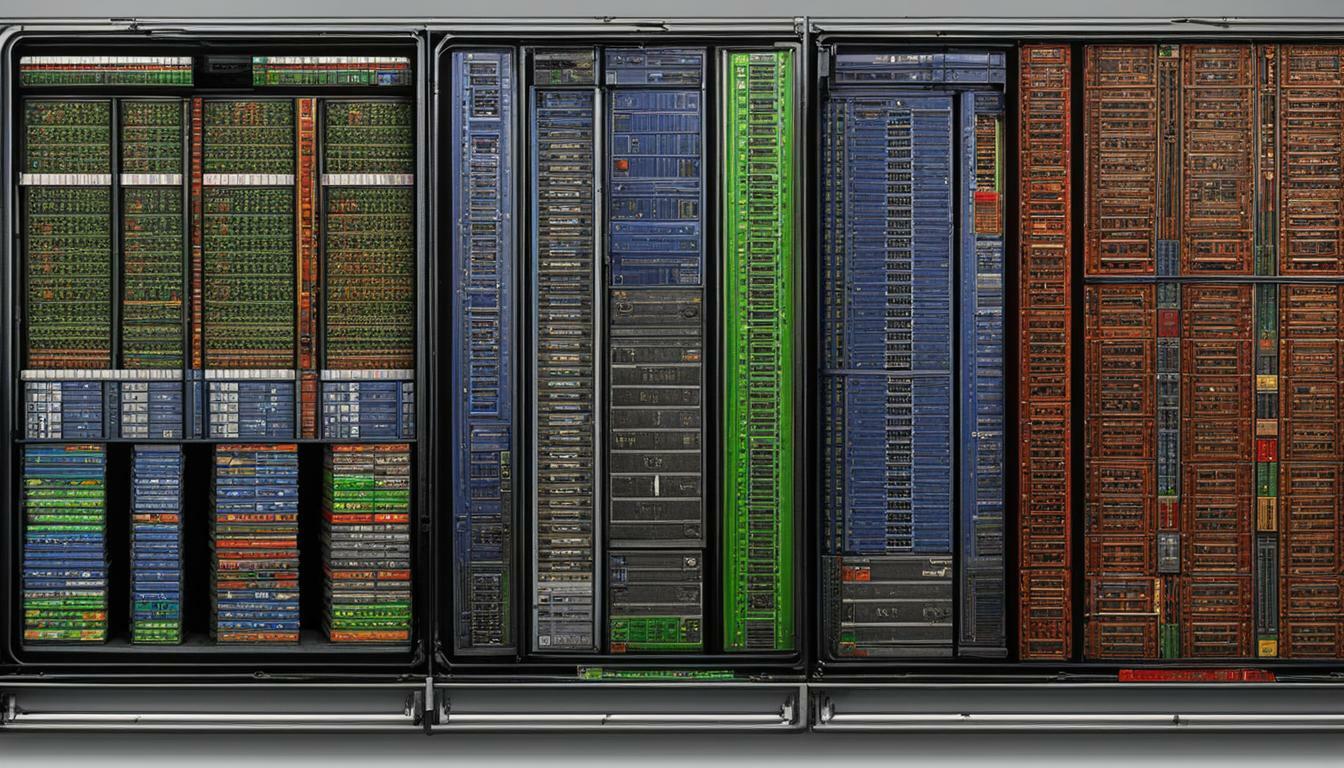Scrum and Kanban are two different Agile project management methodologies that offer unique approaches to managing tasks and projects. While they share some similarities, there are key differences between the two.
Key Takeaways:
- Scrum is a structured framework that breaks projects into time-limited sprints.
- Kanban is a more flexible and visual approach that emphasizes limiting work-in-progress and maximizing efficiency.
- Scrum uses specific roles, ceremonies, and artifacts, while Kanban has no prescribed roles and allows for continuous flow.
- The choice between Scrum and Kanban depends on factors such as project nature, team dynamics, and desired structure and flexibility.
- Some teams combine Scrum and Kanban principles to enhance their processes.
Understanding Scrum Methodology
Scrum is a structured framework that divides projects into time-limited work periods known as sprints and involves distinct roles, ceremonies, and artifacts. It focuses on delivering a potentially shippable increment of work within each sprint, allowing teams to create value quickly and iteratively.
In Scrum, there are three key roles: the product owner, scrum master, and development team. The product owner is responsible for defining and prioritizing the product backlog, ensuring that the team is working on the most valuable items. The scrum master serves as a facilitator and coach, guiding the team in implementing Scrum principles and removing any obstacles that may arise. The development team consists of professionals who collaborate to deliver the agreed-upon work during each sprint.
Scrum ceremonies, or meetings, play a vital role in keeping the team aligned and focused. These ceremonies include the sprint planning, daily scrum, sprint review, and sprint retrospective. Each ceremony serves a specific purpose, such as planning the work for the upcoming sprint, synchronizing team members’ efforts, inspecting and adapting the product increment, and reflecting on the team’s performance and ways to improve.
The Scrum framework also utilizes various artifacts to support transparency and effective collaboration. The product backlog is a prioritized list of features, bug fixes, and improvements that need to be addressed. Sprint backlog captures the specific items selected for the current sprint, while the sprint goal sets the objective for the sprint. Additionally, the burndown chart provides a visual representation of the work completed and the work remaining throughout the sprint, helping the team track progress and make data-driven decisions.
| Roles | Ceremonies | Artifacts |
|---|---|---|
| Product Owner | Sprint Planning | Product Backlog |
| Scrum Master | Daily Scrum | Sprint Backlog |
| Development Team | Sprint Review | Sprint Goal |
| Sprint Retrospective | Burndown Chart |
With its well-defined structure and iterative approach, Scrum provides teams with a framework to manage complex projects effectively. It promotes collaboration, transparency, and continuous improvement, enabling teams to adapt to changing requirements and deliver high-quality work.
Exploring Kanban Methodology
Kanban is a more flexible and visual approach to project management that emphasizes visualizing work, limiting work-in-progress, and maximizing efficiency. It allows teams to have a clear understanding of their workflow and easily identify any bottlenecks that may hinder progress.
The foundation of Kanban methodology lies in the use of a kanban board, which provides a visual representation of the project’s tasks and their current status. The board is typically divided into columns representing different stages of work, such as “To Do,” “In Progress,” and “Completed.” This visual representation allows team members to easily see the progress of each task and prioritize their work accordingly.
One of the key principles of Kanban is the concept of limiting work-in-progress (WIP). By setting WIP limits for each column on the kanban board, teams can prevent overloading and maintain a smooth flow of work. This ensures that team members focus on completing tasks before taking up new ones, leading to better productivity and reduced multitasking.
| Benefits of Kanban Methodology |
|---|
| Improved transparency and visibility of work |
| Increased flexibility to adapt to changing priorities |
| Enhanced collaboration and communication within the team |
| Reduced cycle time and faster delivery of work |
“Kanban is like a traffic light system for project management – it provides clear signals on the progress and bottlenecks in the workflow.”
Scrum vs Kanban Differences
- Scrum uses timeboxed sprints, while Kanban focuses on continuous flow.
- Scrum follows a structured framework with specific roles and ceremonies, whereas Kanban has no prescribed roles and operates with more flexibility.
- Scrum emphasizes delivering a potentially shippable increment of work within each sprint, while Kanban focuses on reducing the time it takes for a project or user story to move from start to finish.
- Scrum is ideal for complex projects with a set cadence, while Kanban suits projects that require adaptability and frequent changes in priorities.
When deciding between Scrum and Kanban, it is essential to consider factors such as the nature of the project, team dynamics, and the desired level of structure and flexibility. Some teams even choose to combine elements of both methodologies, creating a hybrid approach tailored to their specific needs.
Choosing the Right Methodology for Your Team
The choice between Scrum and Kanban depends on factors such as the nature of the project, team dynamics, and the level of structure and flexibility desired. If you have a project with strict deadlines and clear requirements, Scrum may be the better choice. This methodology provides a structured framework with defined roles and ceremonies, ensuring a clear roadmap for project completion. The time-limited sprints keep the team focused and accountable, delivering incremental value at the end of each iteration.
However, if you have a project with evolving requirements and a need for flexibility, Kanban might be more suitable. Kanban allows for continuous flow, enabling teams to adapt quickly to changes and prioritize work accordingly. With its visual approach and work-in-progress limits, Kanban provides transparency and helps identify bottlenecks in the workflow. The emphasis on efficiency and reducing lead time makes it ideal for projects where speed and adaptability are essential.
It’s important to consider your team dynamics when selecting a methodology. Scrum requires a dedicated product owner, scrum master, and development team, each with specific roles and responsibilities. This can work well for teams with clear hierarchies and individuals who thrive in defined roles. Kanban, on the other hand, allows for more flexibility in team structure. It encourages collaboration and shared ownership, empowering team members to contribute to different areas of the project as needed.
Finally, the level of structure and flexibility desired should also be taken into account. Scrum provides a more rigid framework with predefined roles, ceremonies, and artifacts. This can be beneficial for teams that prefer a structured approach and thrive on clear guidelines. Kanban, on the other hand, offers more freedom and flexibility, allowing teams to adapt and evolve the process based on their unique needs and circumstances.
| Factors | Scrum | Kanban |
|---|---|---|
| Project Nature | Structured projects with clear requirements and deadlines | Projects with evolving requirements and a need for flexibility |
| Team Dynamics | Clear hierarchies and defined roles | Collaborative and flexible team structures |
| Structure and Flexibility | More structured and rigid | Flexible and adaptable |
Conclusion
Scrum and Kanban are both effective Agile methodologies that offer different approaches to project management, and the choice between the two depends on various factors.
Scrum, with its structured framework, breaks projects into time-limited sprints. It focuses on delivering a potentially shippable increment of work within each sprint and utilizes specific roles, ceremonies, and artifacts. Scrum teams follow a set cadence of regular sprints and have a product owner, scrum master, and development team.
Kanban, on the other hand, takes a more flexible and visual approach. It emphasizes visualizing work, limiting work-in-progress, and maximizing efficiency. Kanban teams use kanban boards to visualize the flow of work and focus on reducing the time it takes for a project or user story to move from start to finish. Unlike Scrum, Kanban has no prescribed roles and allows for continuous flow.
When choosing between Scrum and Kanban, it’s crucial to consider the nature of the project, team dynamics, and the desired level of structure and flexibility. Some teams even combine the principles of both methodologies to enhance their project management processes. Ultimately, the right methodology will depend on the unique needs and preferences of the team.
FAQ
What is the difference between Scrum and Kanban Agile methodologies?
Scrum is a structured framework with time-limited sprints, specific roles, ceremonies, and artifacts. Kanban is a more flexible approach that emphasizes visualizing work, limiting work-in-progress, and maximizing flow.
How does Scrum methodology work?
Scrum methodology breaks projects into sprints, focuses on delivering a potentially shippable increment, and follows a set cadence. It involves roles like product owner, scrum master, and development team, and utilizes specific ceremonies and artifacts.
What is the Kanban methodology?
Kanban methodology is a visual and flexible approach to project management. It uses a kanban board to visualize the flow of work, emphasizes reducing the time from start to finish, and allows for continuous flow without timeboxed sprints.
How do I choose the right methodology for my team?
The choice between Scrum and Kanban depends on factors like the nature of the project, team dynamics, and desired level of structure and flexibility. Some teams even combine principles from both methodologies to enhance their processes.
 Skip to main content
Skip to main content
